
We may receive commissions from purchases made through links in this post, at no additional cost to you.
It’s always my goal to be helpful through The Fruit Grove, and that includes giving actual practical tips to solve fruit-growing problems. In the case of this article, there are some tangible things I have learned that have caused an improvement in the size and quality of my homegrown lemons.
To some extent, the size a lemon will grow to be is determined by things you can’t control – such as the age and variety of the tree. A young lemon tree may produce smaller lemons the first couple of years it sets fruit, but as it grows, so will the lemons. Also, certain lemon varieties tend to grow larger fruit, such as ‘Eureka’ and ‘Improved Meyer.’
But with a few tips, you can also influence the size that the mature lemons will grow to be, no matter the variety. Commercial growers use these tricks in a highly – often chemically – controlled way so they can have the most marketable lemon crop.
You can apply the same principles to your lemon tree at home (without the chemicals and expensive equipment!). I’ve noticed a significant difference in my lemon size when I started paying attention to these things. Read on to learn how to help your lemons to grow as large and juicy as possible.
1. Pruning
Unlike many other fruits, lemon trees typically don’t need heavy pruning. But moderate annual pruning will not only keep the tree healthier and more attractive, but it will increase the quality and size of the fruit.
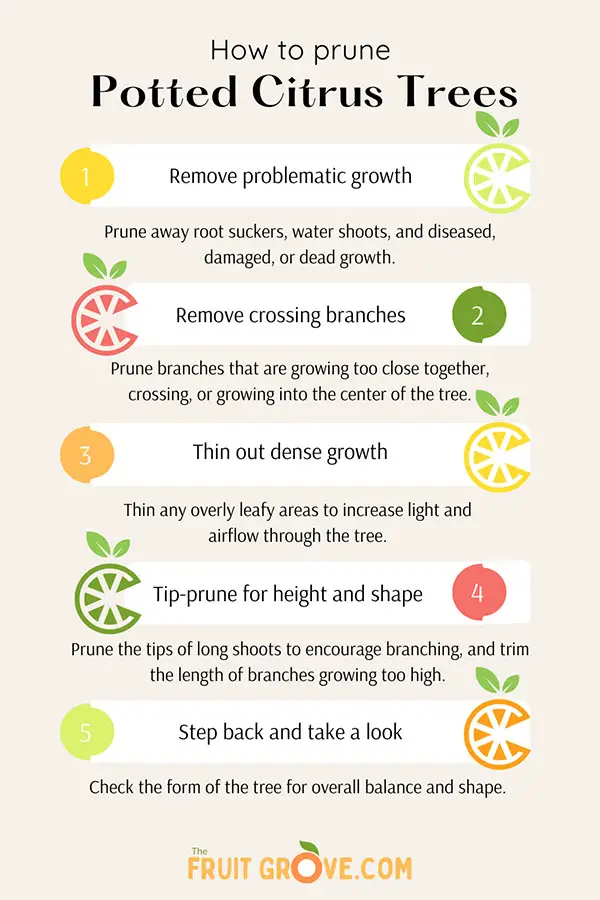
Light pruning reduces the amount of leafy growth on the tree, which allows it to have more resources to support fruit development. Pruning also allows for better sun exposure to all parts of the plant. Light is a big factor that determines the size and flavor of mature lemons.
I live in a hot, humid climate with a lot of disease pressure. Pruning is essential for increasing airflow throughout the plant and preventing diseases from taking hold.
Prune lemon trees in the early spring, just as the tree is waking up from winter semi-dormancy, and before the main flush of blooms. First, remove any damaged or diseased growth, then thin out the branches so that light can reach every part of the tree.
Learn more: A Guide to Pruning Potted Lemon and Lime Trees
Here’s a video where I walk through how I prune my potted lemon trees (look at the size of that Meyer lemon!):
2. Watering
Of course, we all know that fruit trees need water. But the amount and regularity of watering matters – especially when it comes to fruit size.
Water a lemon tree regularly as it is blossoming, setting young fruit, and developing fruit to maturity. In other words, pay close attention to watering throughout the entire growing season. A lemon tree that doesn’t get enough water will have trouble forming full-size fruit.
Lemon trees planted in the ground may need only a little supplemental watering. A mature root system can expertly seek out moisture and nutrients from the soil. But if there are prolonged dry spells – more than a week, say – then give the tree a good drink.
Learn more: Watering Lemon Trees: How to Get It Just Right
Potted lemon trees need much more frequent watering. During a hot summer, you may even be watering your potted tree daily (depending on rainfall). Check the moisture level of the soil. If the top few inches of soil is dry, then it’s time to water the tree.
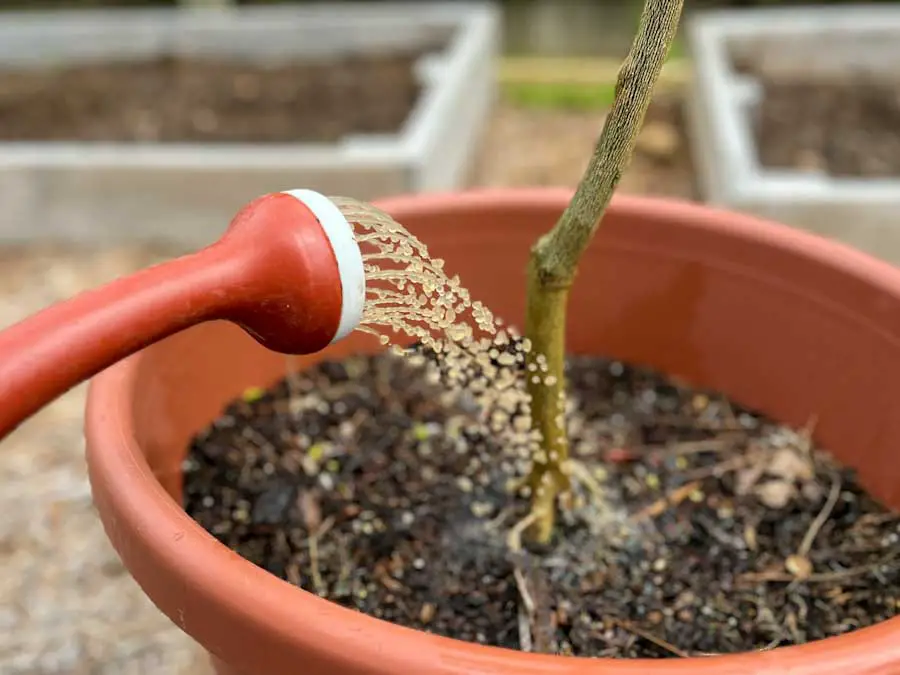
Be careful not to overwater, though. Too much water can lead to root rot, disease problems, and even split fruit. Luckily your lemon tree will give you some clues as to whether it’s getting too much or too little water. Check out Is Your Citrus Tree Overwatered or Underwatered? to learn the difference.
3. Sunlight
Light is one of the most important things that will determine fruit size and flavor. Each ripening lemon needs to get enough sunlight in order to grow to maximum size.
Plant or place your lemon tree in a spot that gets at least 6 to 8 hours of direct sun exposure every day. If you’re growing an indoor tree, situate it right next to a very sunny window. As mentioned above, pruning will also help maximize light exposure to the ripening lemons.
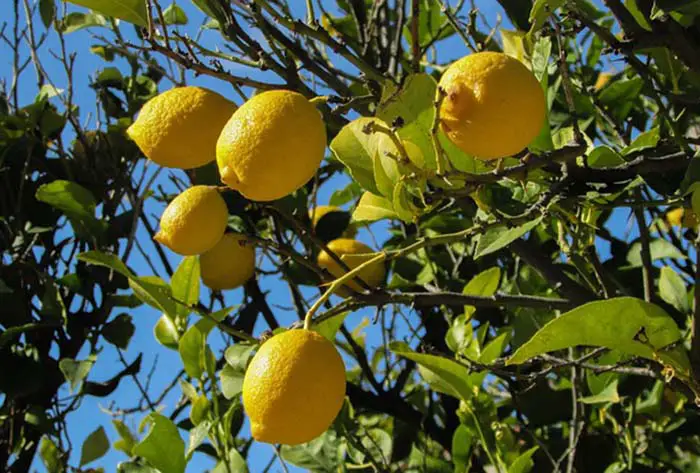
Lots of sun is a good thing – but if you live in an area with very hot summers (like me), beware of heat stress. I’ve located my potted lemons in an area that receives some dappled shade in the afternoon. The trees get plenty of light, but they are protected from direct sun during the hottest part of the day.
4. Fertilizing
If there is one thing you do to enhance fruit growth, make it fertilizing. Whether your lemon tree is planted in the ground or in a container, a proper fertilizing regimen will make a big difference in fruit quality and size.
Lemons particularly love a lot of nitrogen. For other plants, nitrogen is primarily responsible for vegetative growth – that is, leaves and twigs. When leafy growth is too vigorous, it can inhibit blossoms and fruit from forming.
But for lemon trees, nitrogen actually plays a big part in fruit production. Getting adequate nitrogen also helps lemon trees absorb the other nutrients it needs. Potassium also enhances lemon color, size, and flavor, and it helps the tree to be more resilient to weather and water stress.
To learn about what different lemon tree nutrient deficiencies look like and how to address them, check out my article: Yellowing Lemon Tree Leaves? Here are 5 Reasons Why.
Look for a citrus fertilizer that has roughly a 5-1-3 NPK ratio (nitrogen, phosphorus, and potassium). Another rule of thumb is to use a fertilizer with 2 to 3 times the nitrogen in relation to the other elements (2-1-1 or 3-1-1).
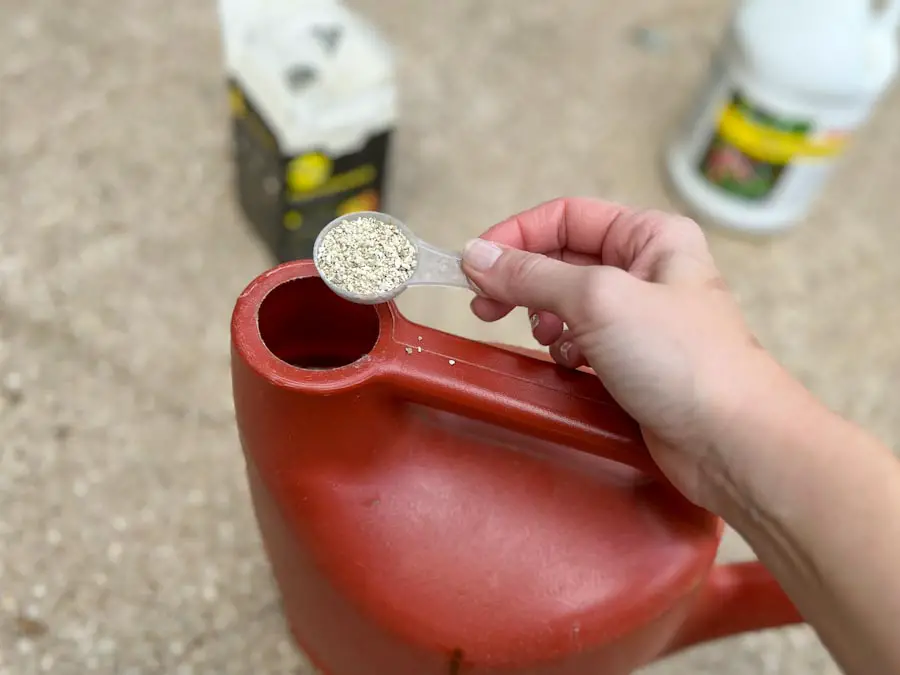
I like to use soluble fertilizers for my potted lemon trees. I typically use a slightly diluted mixture of Miracle-Gro Performance Organics All-Purpose Fertilizer (11-3-8) and this Alaska Fish Fertilizer (5-1-1) for a combination of nutrients and soil-feeding organic matter. A good granular option is Fox Farm Happy Frog Organic Citrus and Avocado Fertilizer (7-3-3).
Potted lemon trees should be fertilized every 2-4 weeks, depending on weather and rainfall. In-ground lemon trees should be fertilized 3 or 4 times throughout the growing season, depending on the size and age of the tree.
Learn more: Fertilizing Potted Lemon Trees: Everything You NEED to Know
5. Fruit Thinning
The lemon tree will do most of the fruit thinning work for you, but it can be very beneficial to do some hand thinning as well. Fruit thinning is manually removing some baby fruits from the tree.
By removing some lemons, especially from large clusters, you are reducing nutrient competition between fruits. This allows more carbohydrates, moisture, and other elements to be available to each fruit.
Fruit size is largely determined early on in the growing process while the lemon is still young and green. Early fruit thinning gives the remaining lemons the best chance of growing to optimal size and flavor.
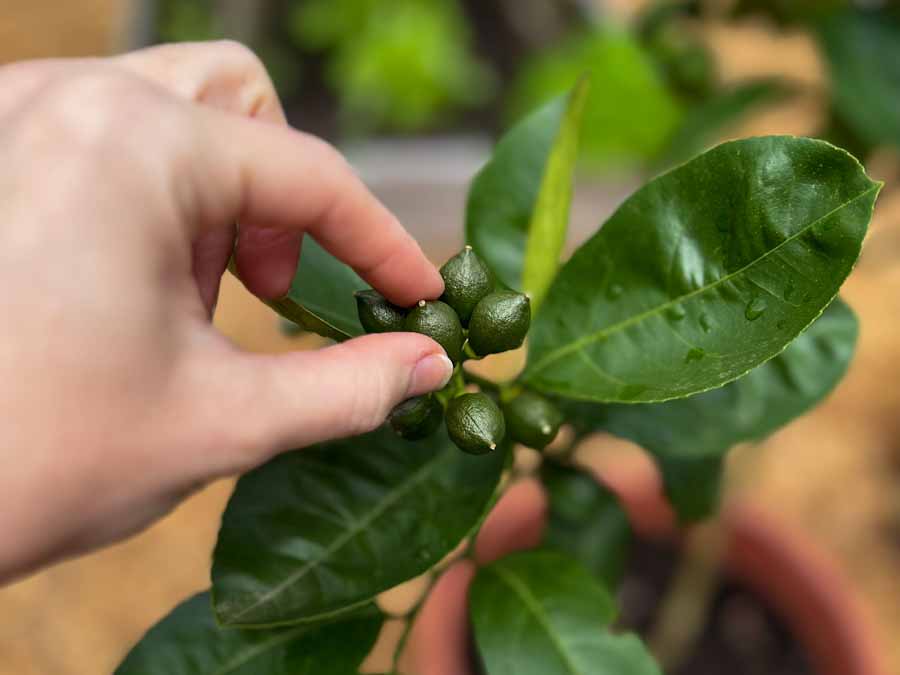
Here’s how to thin fruit on a lemon tree:
- Hand-thin lemons right after the tree’s natural fruit drop. The lemons should be about the size of a dime, or a little smaller. Use a gentle pinch-and-twist motion.
- Remove damaged or excessively small fruit.
- Thin clusters of lemons so that there are 1-2 left in each cluster.
- Thin lemons that are touching, too close together on the same branch, or are close to touching the ground.
6. Harvest Timing
The timing of the lemon harvest can have a big impact on next year’s flowering and fruiting, but it can also affect this year’s fruit size. It’s better to pick large, fully yellow lemons as soon as they are ripe. They should be firm, but give just a little when gently squeezed.
Picking each lemon as it ripens allows the remaining fruits to develop to a larger size (and better flavor). Ripe lemons can be left on the tree for a long time, but there will probably be a reduction of flowers the next spring.
Keeping ripe fruit on the tree also means that the lemons have more competition for water and nutrients – leading to smaller fruit. Pick lemons as they’re ready to give each lemon a chance to grow to full size.

